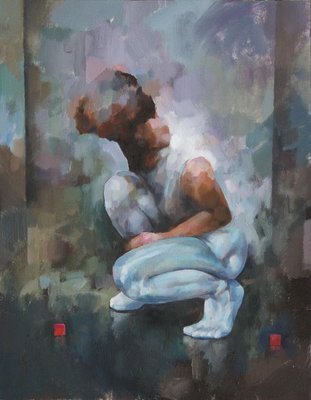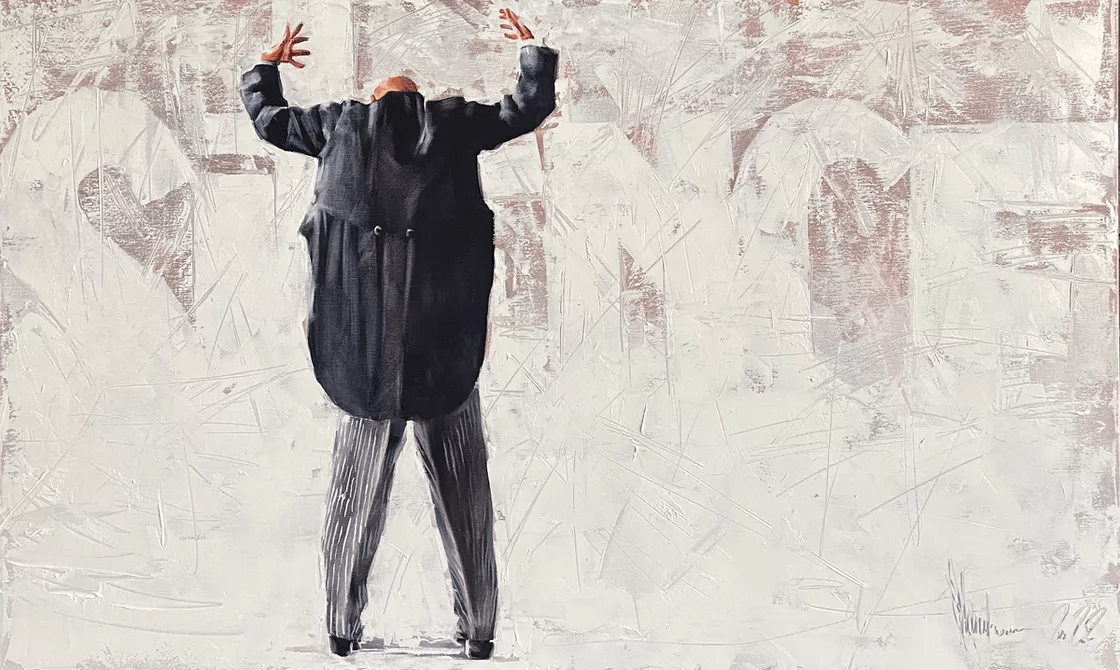Discover the very best Tips for Creating Stunning Figurative Oil Painting Artwork
Discover the very best Tips for Creating Stunning Figurative Oil Painting Artwork
Blog Article
A Journey Through the Globe of Figurative Oil Paint: Finding the Special Characteristics and Emotional Deepness of the Medium

History of Figurative Oil Painting
Emerging during the late Middle Ages and thriving throughout the Renaissance, figurative oil painting has a rich history that reflects both artistic innovation and social advancement. Originally, oil paints were made use of in Europe as a method to boost the luminance and deepness of color in artworks. Musicians such as Jan van Eyck spearheaded the medium, showing its possible to record complex details and textures, thus allowing for an extra natural depiction of the human type.
As the Renaissance advanced, renowned numbers like Leonardo da Vinci and Michelangelo broadened the boundaries of figurative oil paint. They emphasized physiological precision and point of view, producing jobs that shared feeling and narrative depth. The tool's convenience permitted testing with light and darkness, causing the advancement of chiaroscuro strategies that even more enhanced the visual experience.
Unique Qualities of the Medium
The development of figurative oil painting has actually been substantially influenced by the unique attributes of the medium itself. Oil paint, made up of pigments suspended in oil, supplies artists a remarkable adaptability that enables a wide variety of surfaces and appearances. Its sluggish drying out time enables careful mixing and layering, which can create deepness and luminosity unattainable in other tools.
Moreover, oil paint's rich coloring provides lively colors that keep their intensity gradually. This particular is essential in metaphorical painting, where recording the nuances of skin tones and psychological expressions is paramount. The ability to attain refined slopes and soft changes improves the realistic top quality of subjects, permitting artists to communicate complicated moods.
Additionally, oil paint adheres well to various surfaces, such as metal, canvas, and wood, widening the extent of imaginative expression. The tool's versatility sustains various methods, from detailed realistic look to expressive brushwork, enabling musicians to discover their private styles.
Ultimately, the one-of-a-kind properties of oil paint not only enhance the visual experience yet additionally empower musicians to interact extensive narratives, making metaphorical oil painting a deeply expressive art type.
Methods and Styles Utilized
Within the realm of metaphorical oil painting, artists employ a diverse array of methods and designs that add to the deepness and splendor of their job. One noticeable method is glazing, where transparent layers of paint are used over dried layers, permitting light to permeate and show, boosting luminance and deepness. This technique is commonly used to accomplish a sense of realistic look and intricacy in complexion.
One more technique is impasto, where thick layers of paint are used with a scheme knife or brush, developing a distinctive surface that includes a three-dimensional top quality to the paint. This design can evoke a natural feedback, attracting the viewer in via its tactile nature.
Musicians additionally check out numerous brushwork styles, from penalty, comprehensive strokes that record elaborate attributes to wider, more meaningful strokes that convey motion and feeling (figurative oil painting). The choice of color scheme substantially affects the overall mood of an item, with warm tones often giving sensations of comfort and trendy tones recommending sorrowful
In addition, the integration of chiaroscuro, the contrast in between light and darkness, allows artists to produce remarkable impacts that enhance the narrative top quality of their job. Each method and design is very carefully chosen to elevate the visitor's experience and understanding.
Psychological Depth in Figurative Art
Psychological depth works as a foundation in metaphorical art, enabling artists to transcend plain depiction and engage viewers on an extensive level. This emotional resonance is often accomplished with the nuanced representation of human numbers, expressions, and communications. Artists harness the power of light, color, and shadow to stimulate sensations that reverberate deeply with the click reference audience, creating a visceral connection to the topic.
In figurative oil paint, the intricate layering of paint can reflect the complexities of human emotion. The choice of palette, whether awesome or warm, plays an important function in setting the mood and environment of an item. For circumstances, softer colors might evoke tranquility and self-contemplation, while vibrant, contrasting shades can connect stress and drama.

Influential Artists and Their Functions
Various significant artists have dramatically shaped the landscape of metaphorical oil paint, each adding one-of-a-kind perspectives and strategies that continue to influence contemporary creators. Among these artists, Lucian Freud stands apart for his extreme mental depth and raw representation of the human kind, commonly blurring the lines in between elegance and decay. Freud's works, defined by thick, impasto brushstrokes, welcome viewers to challenge the complexities of identification and susceptability.

In A Similar Way, Andrew Wyeth's thorough realistic look in pieces like "Christina's World" catches profound stories within seemingly easy compositions. His use of light and darkness stimulates a sense of fond memories and psychological vibration, attracting audiences into the intimate globes he portrays.
In the world of modern-day art, Kehinde Wiley has obtained recognition for his lively, larger-than-life portraits that test traditional concepts of representation. By putting individuals of shade in contexts evocative classic portraiture, Wiley's work redefines the canon of art history.
These artists, alongside others, have not just enriched figurative oil painting yet have likewise broadened the dialogue bordering emotion, society, and identity, making certain that the medium continues to be a vital kind of expression in the art globe. figurative oil painting.
Conclusion
In conclusion, metaphorical click reference oil painting continues to be an effective medium that encapsulates the intricacies of human feeling with its abundant pigmentation and versatile techniques. The historical advancement of this art kind, combined with its unique attributes, permits profound creative expression. Techniques such as glazing and impasto enhance the emotional resonance of each item, while the payments of significant artists remain to form the discourse and influence bordering this ageless category. The trip via figurative oil painting reveals its lasting significance in the art world.
The exploration of figurative oil paint provides an extensive understanding into the interaction of strategy, emotion, and historic context that defines this venerable medium. Oil paint, composed of pigments suspended in oil, uses musicians a remarkable convenience that permits for a large variety of textures and coatings.Within the world of figurative oil paint, artists utilize a diverse array of methods and designs that contribute to the depth and richness of their job.Many significant artists have actually considerably formed the landscape of metaphorical oil paint, each contributing one-of-a-kind perspectives and techniques that proceed to motivate contemporary creators.In conclusion, metaphorical oil paint remains a powerful tool that encapsulates the complexities of human feeling through its rich coloring and versatile strategies.
Report this page